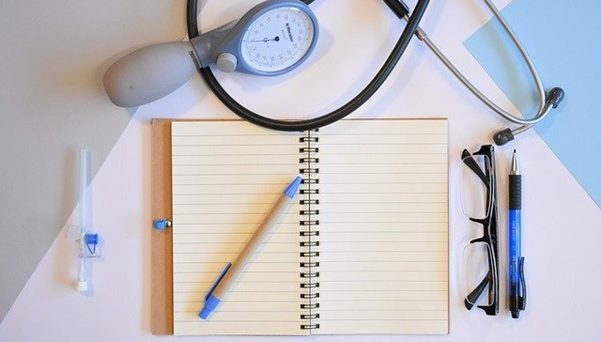
I had the fortunate and unique opportunity to speak with F (pseudonym), a 30-year-old female with a maternally-inherited mitochondrial disease: Leigh-like syndrome.
Leigh Syndrome (LS), is a rare, inherited condition; usually becoming apparent in early infancy, with loss of motor skills, vomiting, or seizures. It can also result in impaired vision, and take a great toll on one’s mental health. LS results from defective production of mitochondrial energy, caused by deficiencies or mutations in any mitochondrial respiratory chain complex. There are two inheritance patterns: mitochondrial and nuclear gene encoded. F’s case followed the rarer mitochondrial pattern, occurring in around 20% of cases. Unfortunately, there are limitless gene mutations resulting in mitochondrial disease.
“I walked into hospital and came out in a wheelchair”.
F was open in telling me about sadly losing her brother to the same condition at 19 months old. When she first developed difficulty walking at age 7, the consultant who also treated her brother told her she was “attention-seeking”. This dismissal resulted in a delay in diagnosis and treatment. At 11, F visited her GP who suggested a specialist. Here, she was subjected to MRI, kidney scans, and eye examinations. These activities can cause harm with such a condition, as demonstrated with F: a lumbar puncture induced headaches lasting 10 years, and a muscle biopsy left her unable to walk. “I walked into hospital and came out in a wheelchair”. F recalled how being restricted to a wheelchair left her feeling excluded from her peers. First experiences of the health service set the tone for a patient’s trust in doctors.
Typically, LS patients wait four years before receiving a definitive diagnosis. F was diagnosed at age 12. This delay can only have been exacerbated by the fact the family had already lost one child. Because LS only rarely begins after infancy, F did not present with ‘typical’ symptoms and thus was overlooked, despite her family history. For females with maternally-inherited LS, the likelihood of passing on a form of the disease is high. This is an important reason why establishing molecular diagnoses for rare genetic diseases is essential, especially for those making reproductive decisions down the road.
“If you believe in miracles get hoping. There’s nothing I can do.”
F is also registered as severely-sighted, due to LS. At 23, she experienced an abrupt reduction in vision following a chest infection which she described as “like a power cut to the eyes”. An ophthalmologist bluntly told her “If you believe in miracles get hoping. There’s nothing I can do.”
It’s shocking to discover such a lack of empathy, with a patient who has experienced such a life-changing health event. A study conducted by Royal Blind established that 85% of respondents indicated that their emotional well-being had been challenged by visual impairment. Sight loss causes great changes to way of life: F had only recently achieved a lifetime dream of driving, but her sight loss meant she was unable to take her test. She now only has pixelated vision, and is unable to read or watch TV. Patient’s should feel fully supported regardless of ability to actually improve sight.
 Coordinated care is equally essential. On average, patients must travel at least two hours to see specialists at great cost financially and inducing a deterioration in health. It is challenging enough when these appointments are necessary; yet on one occasion, F attended an ophthalmology appointment, paying for trains and hotel stays, only to be told she had wasted the trip. Effective communication between healthcare professionals to ensure appointments are beneficial, and enhanced integration of services would improve the rare disease experience. The nature of rare disease means most patients need contact with multiple specialists, on average attending at least three clinics. In the UK, there are three specialist centers located in London, Newcastle, and Oxford which are part of the NHS Highly Specialised Services (HSS) for rare mitochondrial disorders, created in April 2007. Dispersal of specialists into separate centres creates barriers to healthcare.
Coordinated care is equally essential. On average, patients must travel at least two hours to see specialists at great cost financially and inducing a deterioration in health. It is challenging enough when these appointments are necessary; yet on one occasion, F attended an ophthalmology appointment, paying for trains and hotel stays, only to be told she had wasted the trip. Effective communication between healthcare professionals to ensure appointments are beneficial, and enhanced integration of services would improve the rare disease experience. The nature of rare disease means most patients need contact with multiple specialists, on average attending at least three clinics. In the UK, there are three specialist centers located in London, Newcastle, and Oxford which are part of the NHS Highly Specialised Services (HSS) for rare mitochondrial disorders, created in April 2007. Dispersal of specialists into separate centres creates barriers to healthcare.
Technology can reduce limitations imposed by rare disease. F suffers dystonia and cannot walk unaided. However, she can drive her power chair, which offers independence: she travels alone to Liverpool to learn Braille. Her synaptic talking phone offers additional independence. Audio books and description allow for enjoyment of the arts despite increasing sight loss. Atrophy of throat muscles has led to a deterioration in speech which has affected F’s confidence. However, she actively uses social media to remain connected.
F’s desire to ensure her diagnosis doesn’t prevent her from pursuing independence and helping others is inspiring. She founded Leigh Network in 2010 which supports families affected by mitochondrial disease through fundraising and monthly online meetings.
I was saddened to learn of F’s overall negative experience of the health service; noting only three doctors she felt had made her experience a positive one. A neurologist once asked F, “What is Leigh syndrome? If you had MS, I could help you.” The perception must change from one of medical ignorance to genuine interest and awareness of the every-day challenges faced by rare disease patients.
Acknowledgements:
I am indebted to F and her family for allowing me to use their story in this essay.
Comments